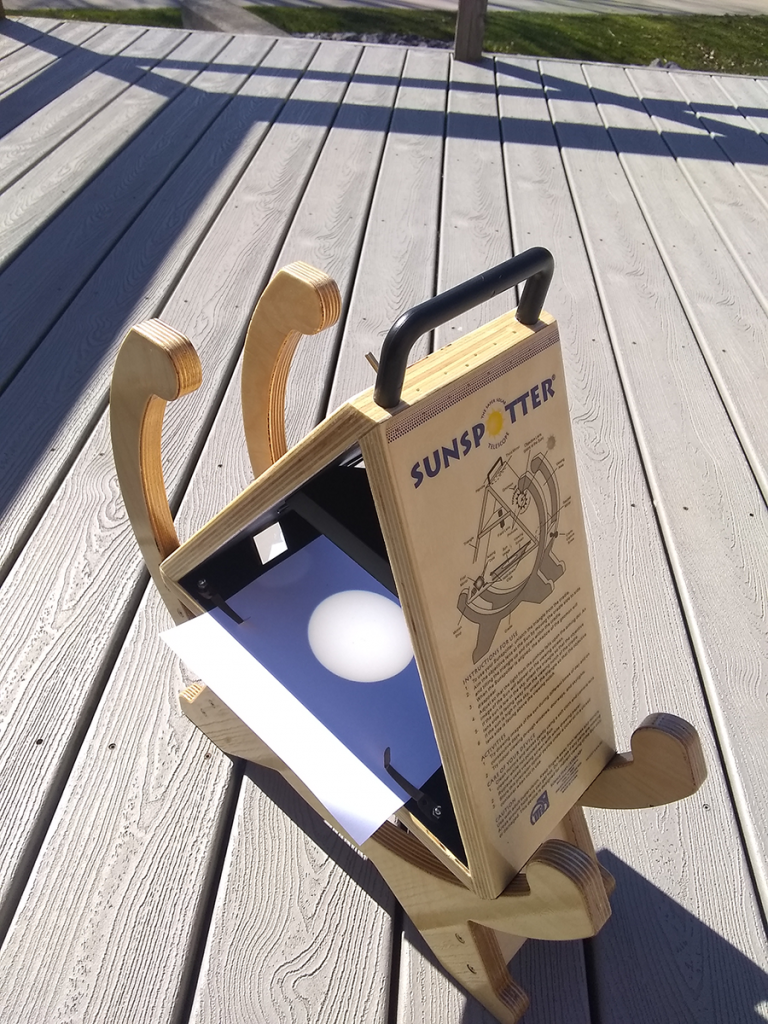
There’s a total solar eclipse coming across North America shortly. Weather permitting, make sure you take a little time to appreciate it!
With a little luck, we’ll be watching that little circle disappear, bit by bit, awaiting a little magic.
Discoveries in the Physics & Astronomy shop | Science, curiosities, and surprises

There’s a total solar eclipse coming across North America shortly. Weather permitting, make sure you take a little time to appreciate it!
With a little luck, we’ll be watching that little circle disappear, bit by bit, awaiting a little magic.
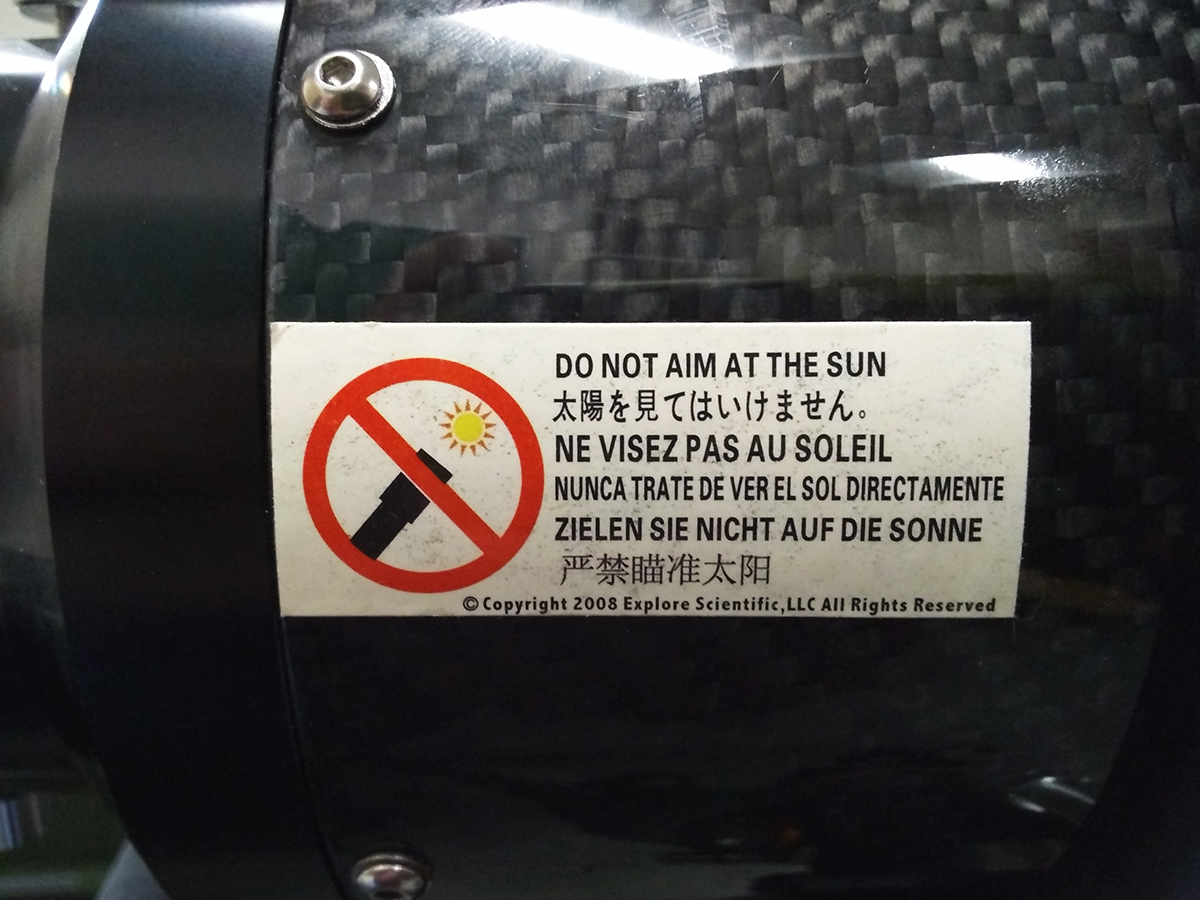
For very important safety reasons, you should never point a telescope at the sun. Without proper safety filters and the utmost care, that is.
There’s a solar eclipse in a month, and we’re definitely pointing this particular telescope at the sun. With the proper filters and the utmost care, of course.
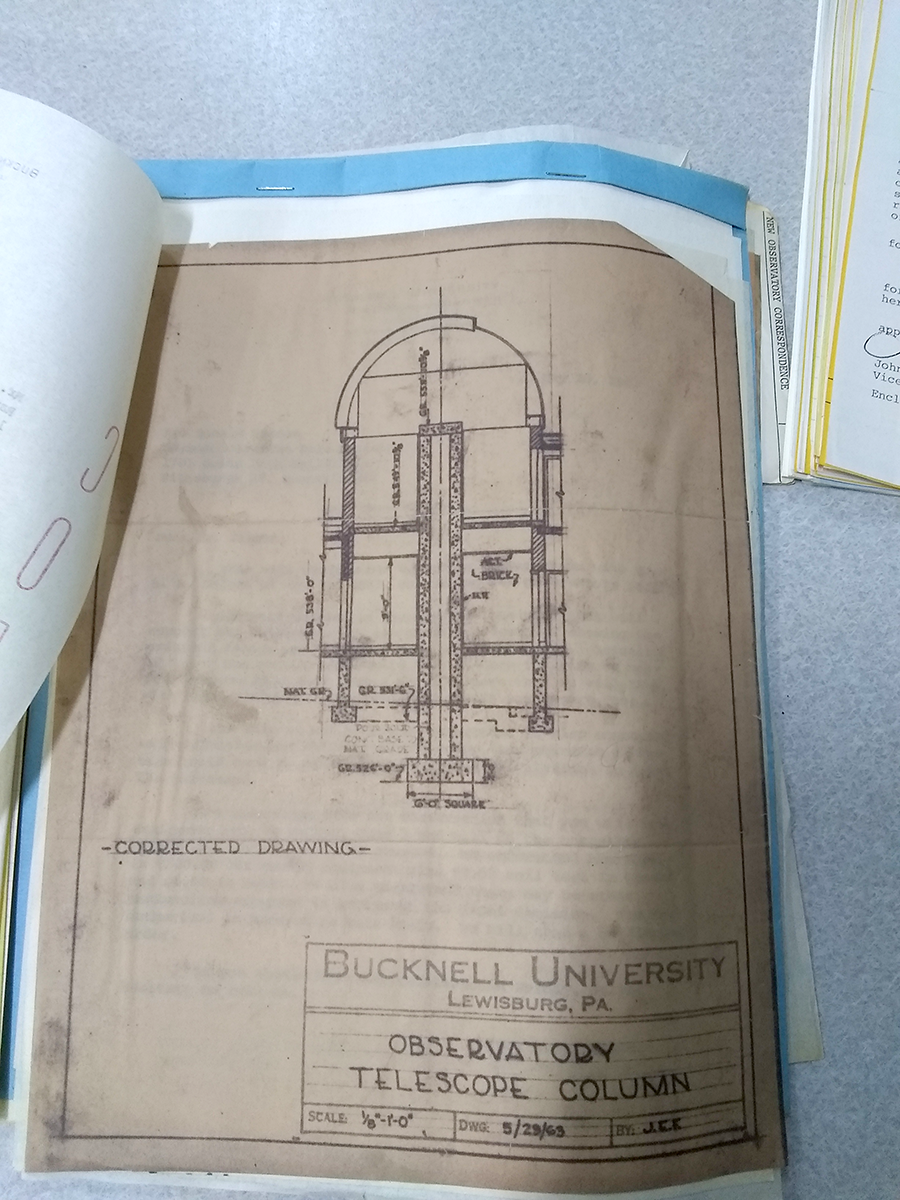
Our wonderful Clark refracting telescope support column, in all its masonry glory. Structurally isolated from the rest of the building so that footsteps don’t cause wobbles in the telescope’s field of view.
Sometimes, it’s the little things.
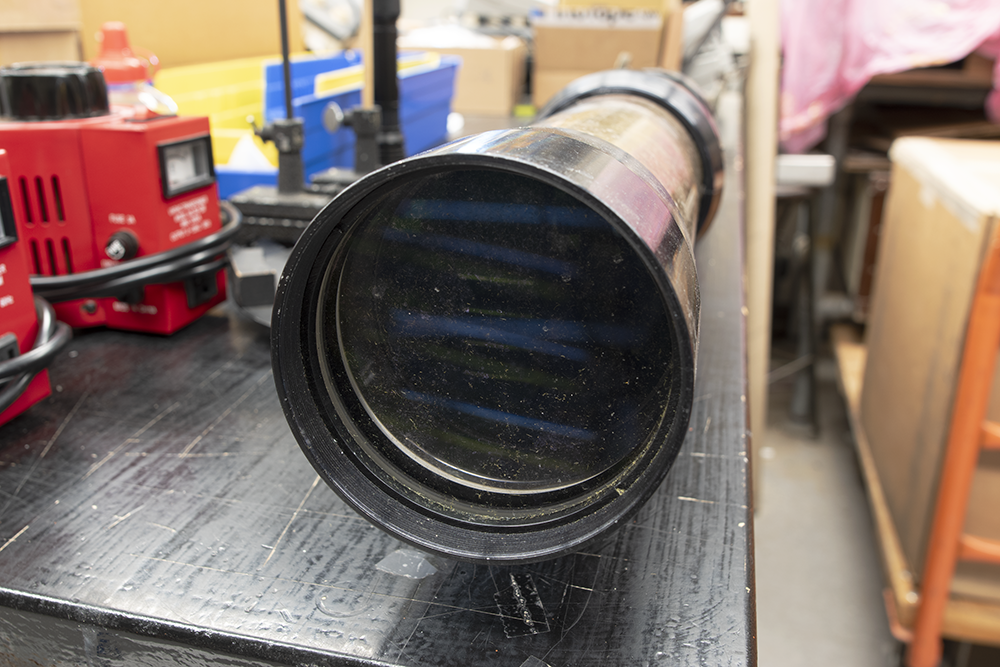
For the most part, the light accumulation of dust, pollen, and other stuff on the objective lens of your telescope is a thing you live with and ignore. The damage you can do to the lens and its optical coatings is far more severe than the minor loss of image quality from tiny flecks. Known and accepted trade-off.
Here, however, we have a classic TeleVue Renaissance that’s still in good shape. Aside from the dust and dead spiders, anyway. Exact age is unclear, but we can roughly place it between TeleVue’s founding in 1977 and the construction of the “Halley’s Comet” models in 1985. Serial number 1100, for anyone keeping track at home. Even dust-covered, the optics appear good at a quick glance, and they have a reputation for remaining in good shape for a long time.
There’s a bit of chromatic aberration when you look closely, an issue which has been resolved in their current models. (Optics = hard.) The design type is called a Nagler-Petzval, which uses a pair of lens doublets to correct numerous distortions caused by refraction. Every design has its pros and cons; this one’s quite nice. Our version has – we think – an air-spaced doublet (two lenses utilizing different curvatures) as the objective, and a cemented doublet in the rear.
At least, that how the Halley’s Comet edition was made. The current optics update utilizes two air-spaced doublets – see the diagram for the NP101is – so it’s reassuring to see that the improvements are incremental. Good sign for the one we have.
Okay, the brass could’ve aged better, but it’s got character!

Black on brass looks good.
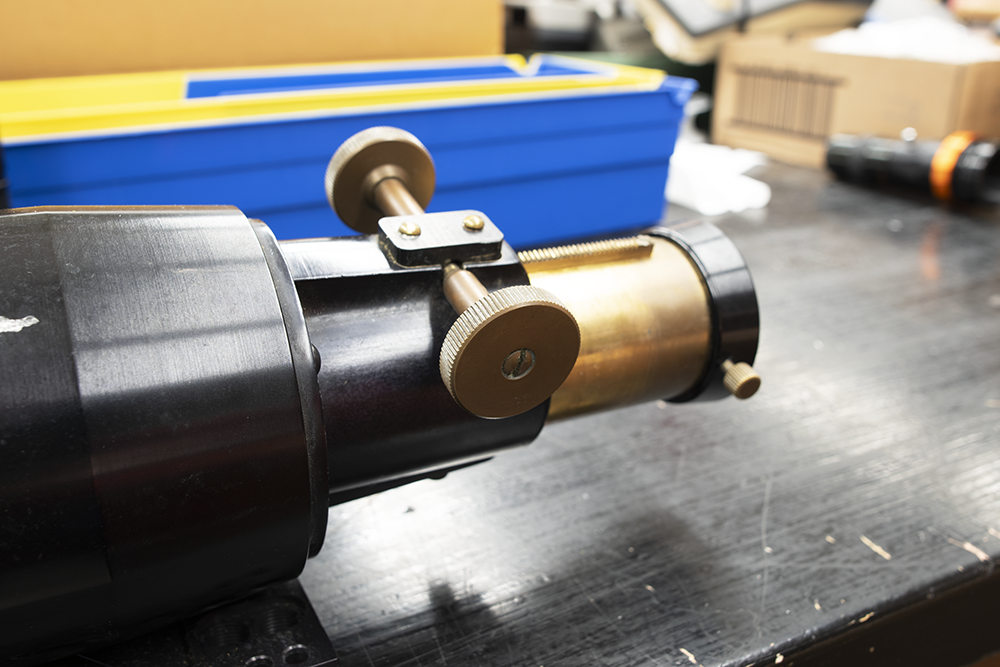
Even the knurled knobs on the focuser are brass. We don’t want to leave this for display, however. We want to see the stars!
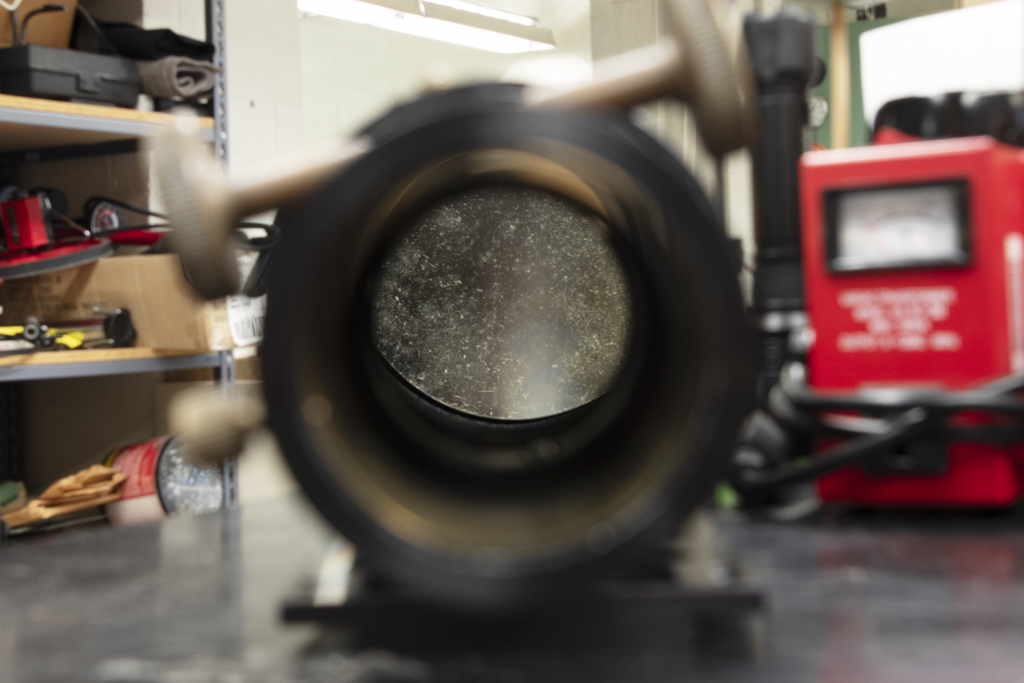
That dust, though.
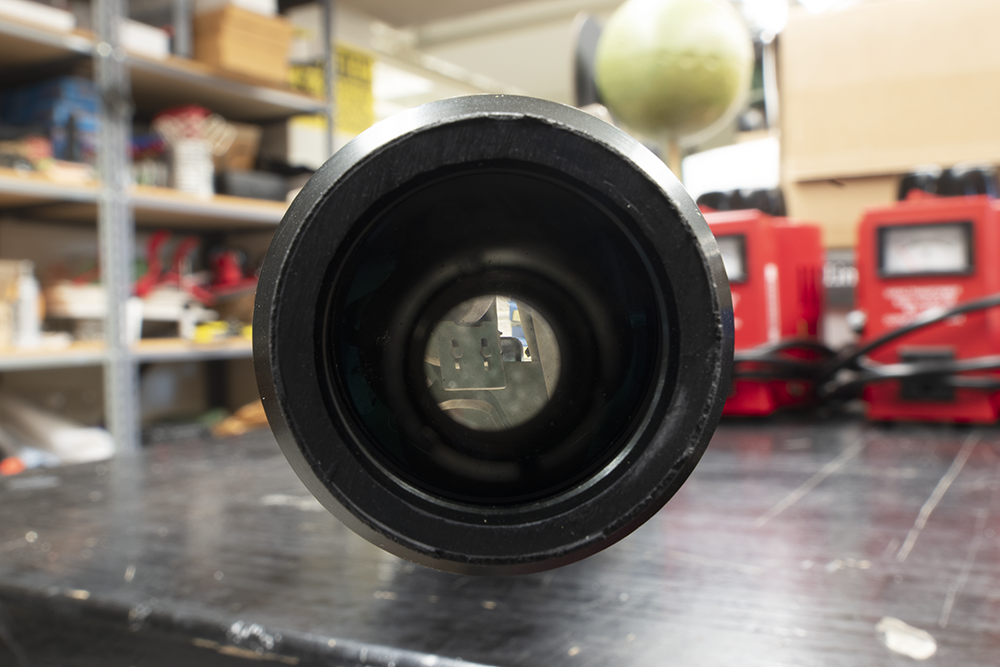
Yeah, definitely a problem. A cleaning is in order.
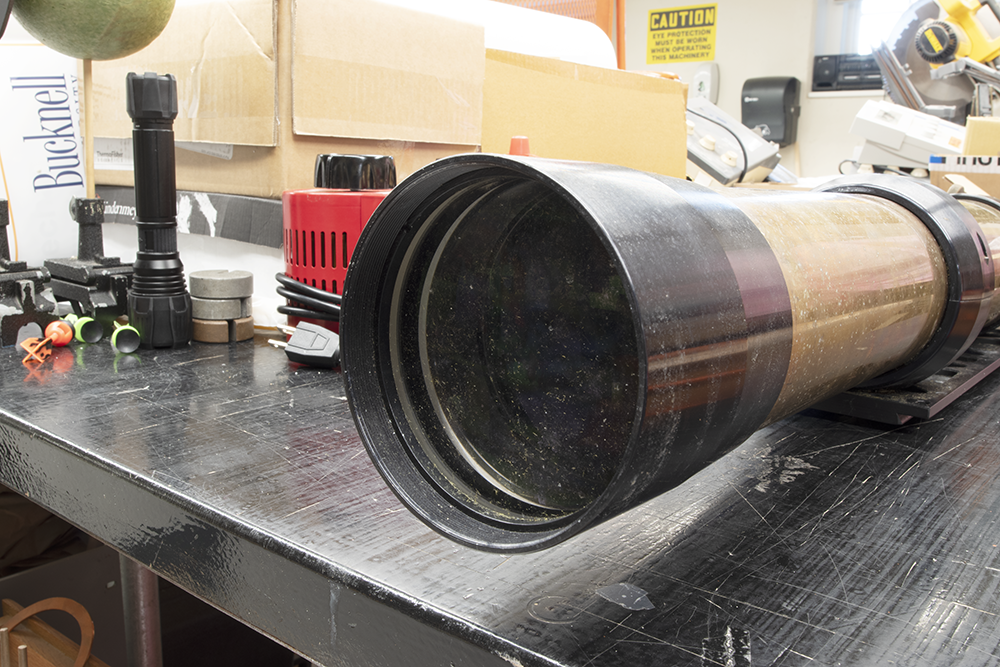
Not pictured: the dead spiders removed with air from a bulb blower. Dead spiders do not improve optical quality.
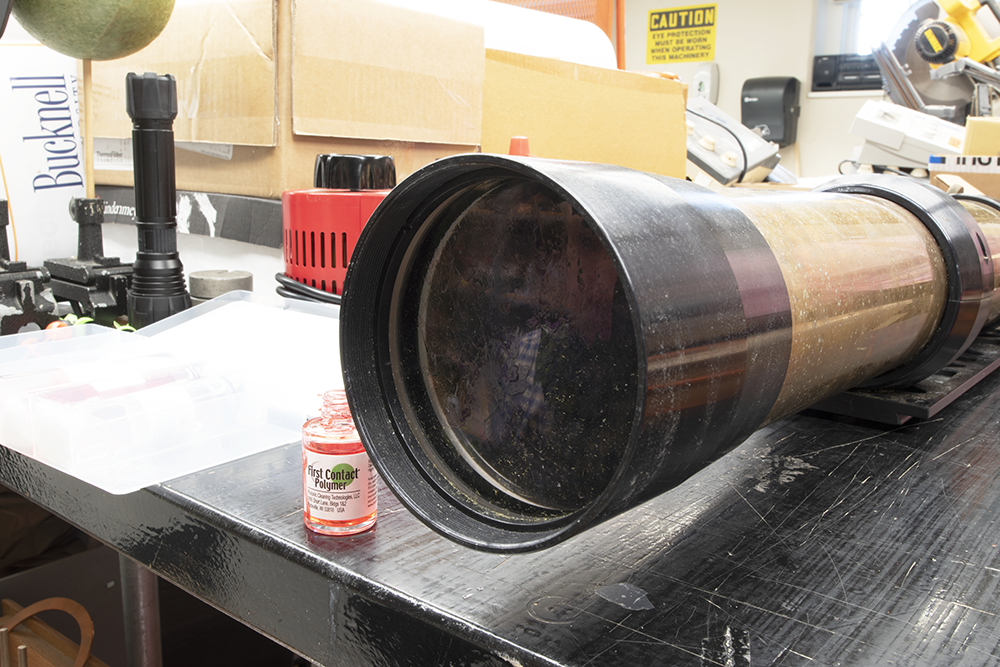
Here, we’re applying a coat of First Contact polymer cleaner, an expensive but effective treatment for safely removing gunk from precision optics. Comes in a wee bottle like it’s nail polish and smell like nail polish remover. Because it’s got acetone and other solvents in it.
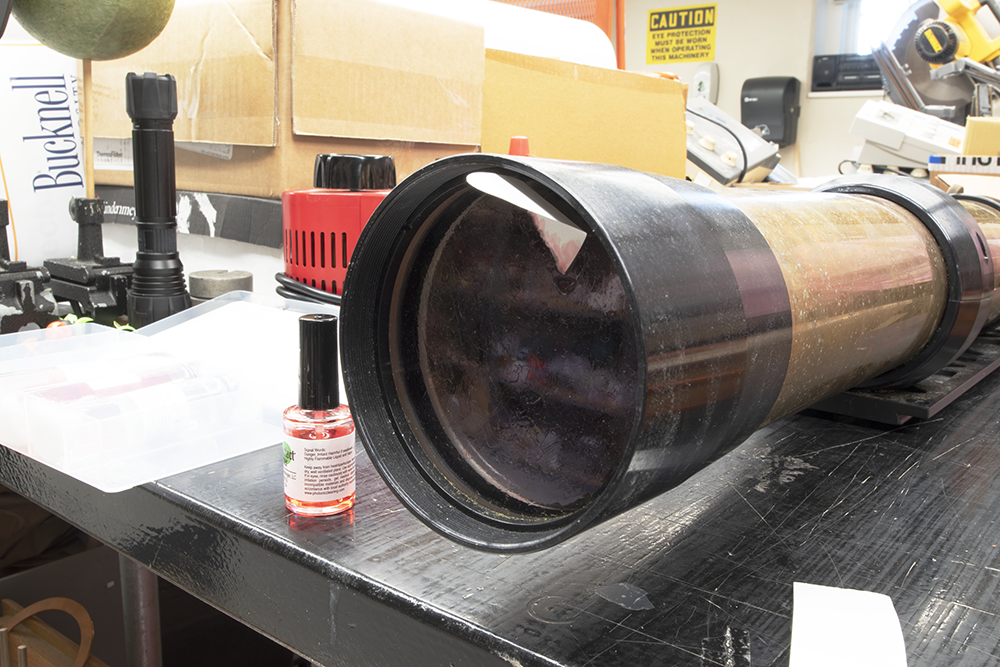
Once it dries, that little tab lets us pull away the pink film with all of the dust and debris stuck in it. A good time to wander away from the stink of volatile solvents and get a cup of coffee.
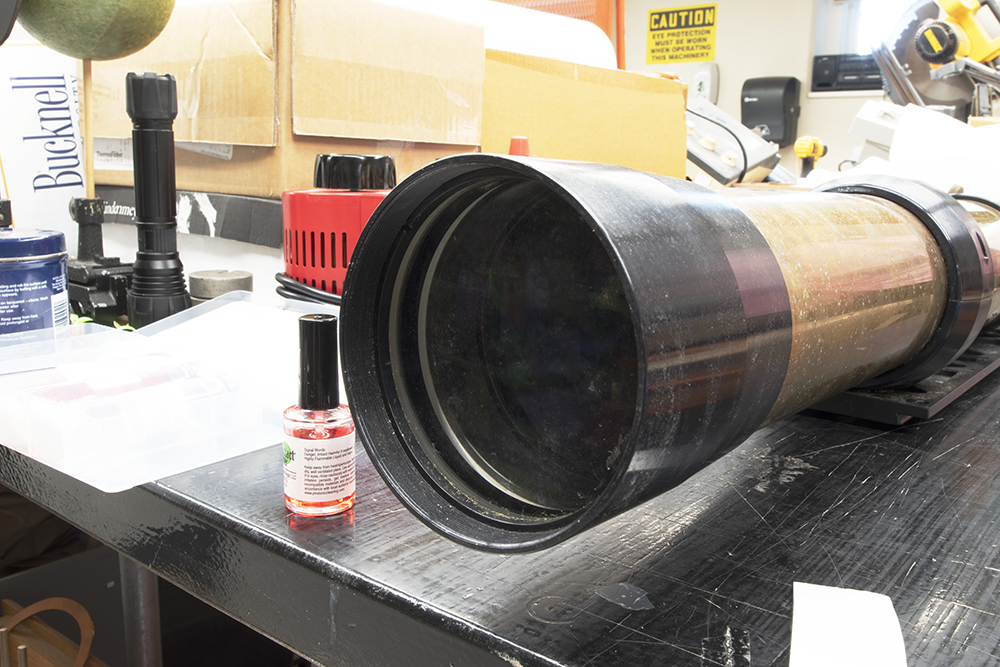
And, well, that’s a substantial improvement.
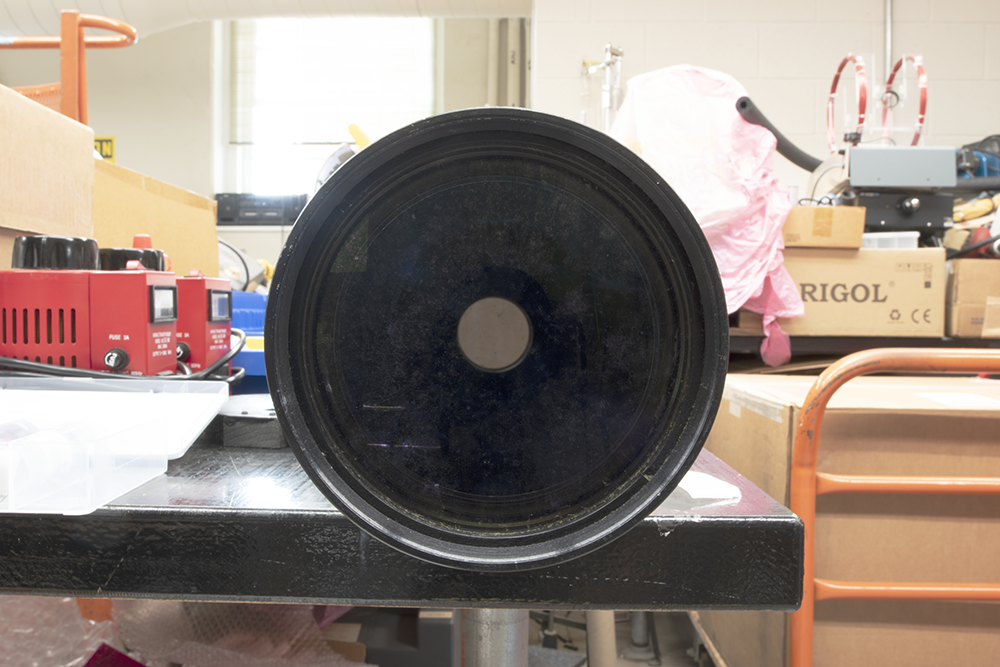
It’s not perfect. The polymer is very good at removing particulates, but less so at water-soluble stuff. Once we evaluate this with a camera setup, we can see if a follow-up cleaning with deionized water is necessary.
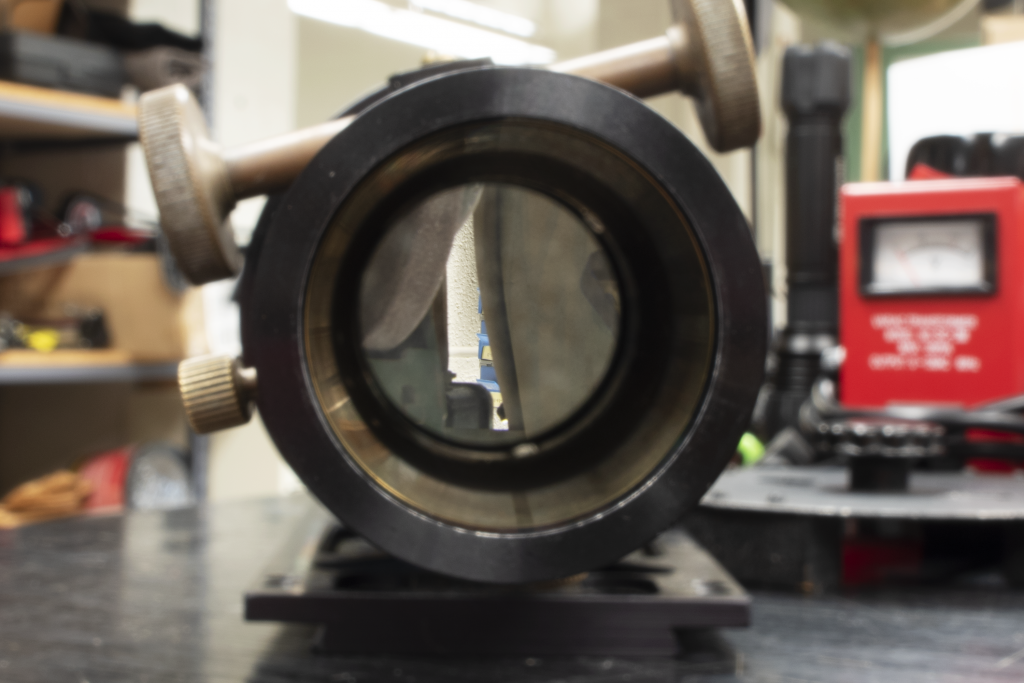
Problem there, of course, is that we run the risk of introducing tiny scratches in the process. Could be worthwhile if the effects are still visible, but we’re still erring on the “do a minimum of harm” side of things.
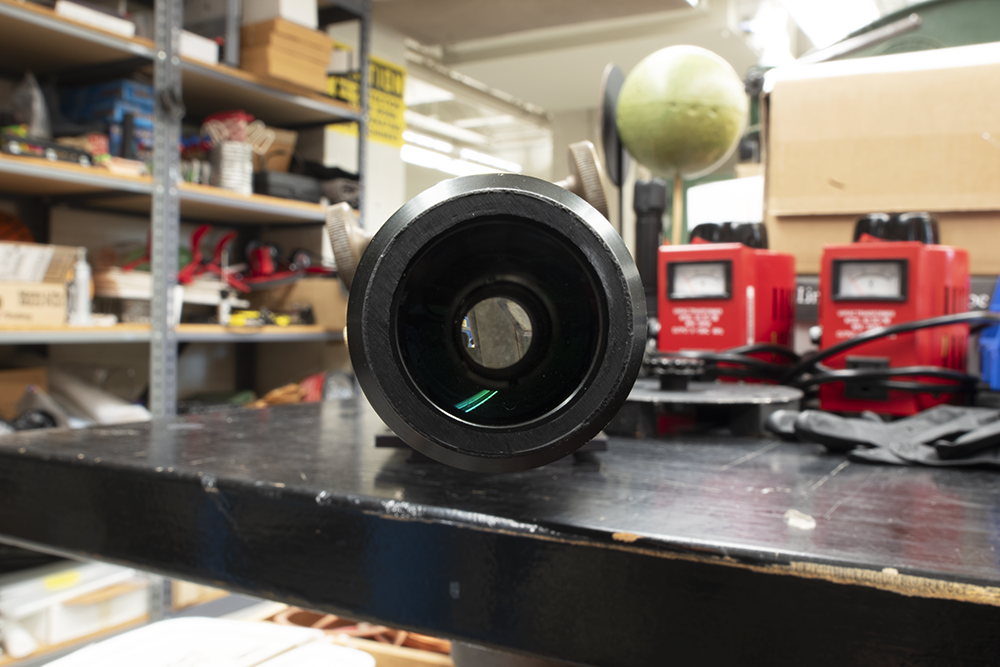
Will it live up to its potential as an imaging ‘scope? Maybe. There’s a fair chance. If not, we’ll keep it around as a stylish yet usable throwback for visual observation. The best telescope, as they say, is the one you use.
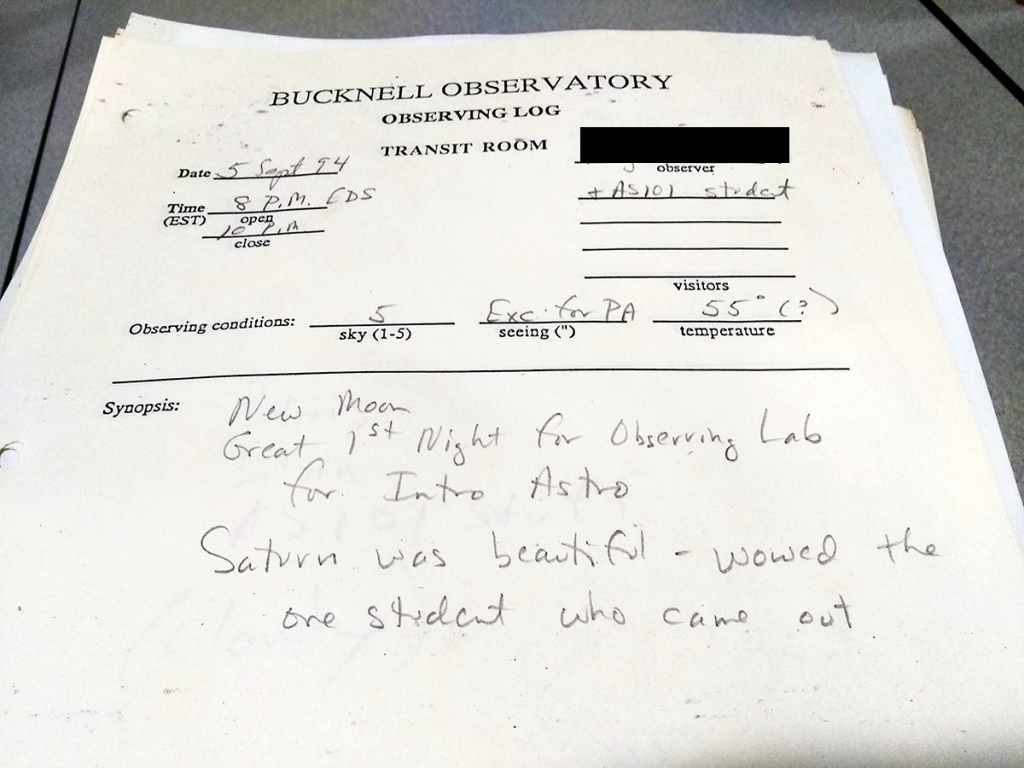
Your average TA for an Astronomy night lab is excited about their job. They not only took an Astronomy course, but liked it enough to come back. At night. Irregularly, as the weather permits, sometimes in the cold of a Pennsylvania winter. They’re enthusiastic about their job. We’re enthusiastic about them.
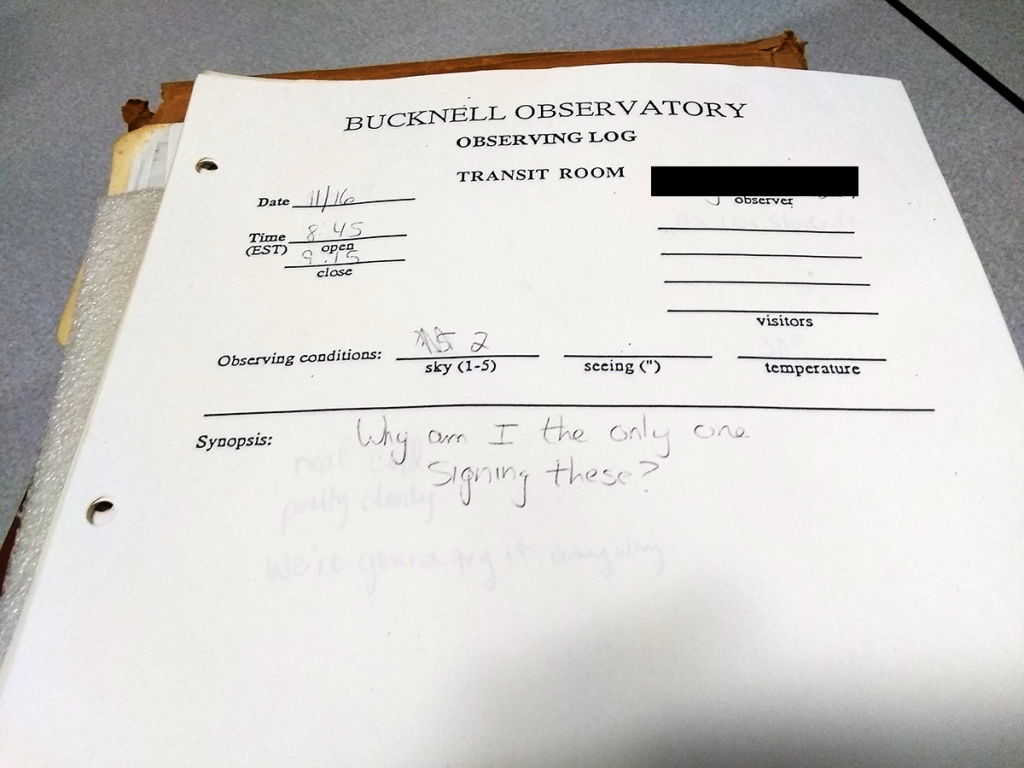
So when you find notes from almost three decades ago with student gripes? Totally understand. We wish every student could bring the same excitement to a night with telescopes and stars.
And, for the record: Saturn absolutely is beautiful through a telescope on a night with no moon. Just phenomenal.

Some years ago, back in 1887, the University received a lovely Clark & Sons refracting telescope, complete with a clock drive to track the stars against the Earth’s rotation. When a shiny new toy scientific apparatus arrives on your doorstep, it’s very important to confirm that it works as intended. Here, in an old notebook, we see the original data on the clock drive’s variance from the ideal sidereal tracking rate.
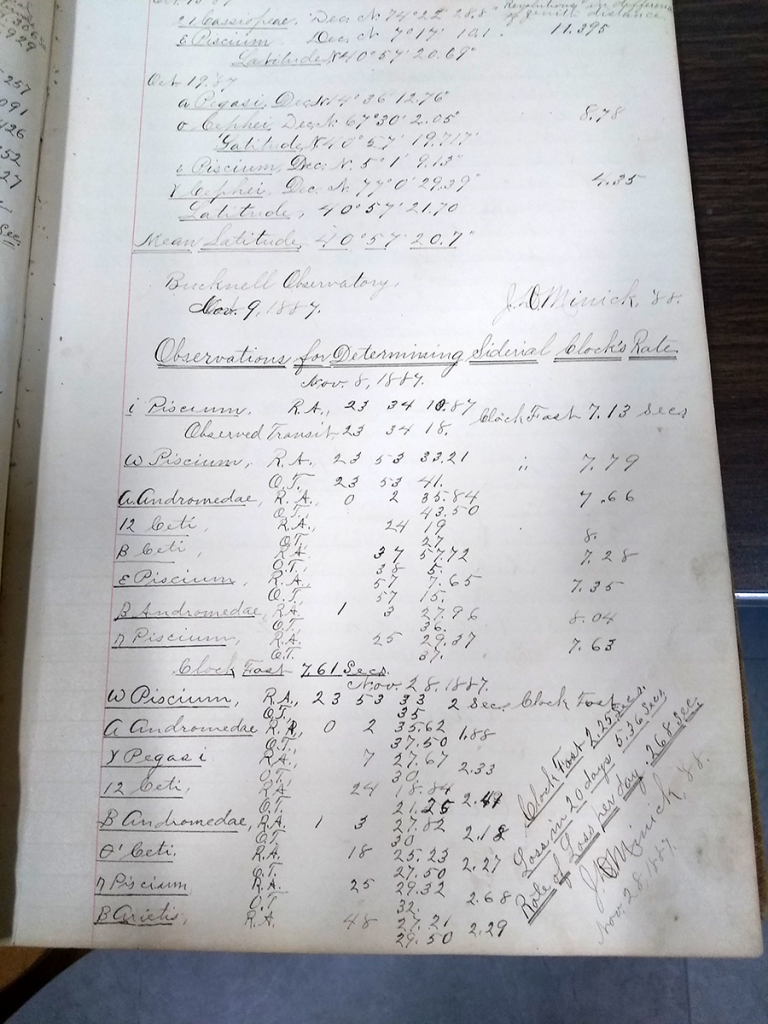
“Observations for Determining Sidereal Clock’s Rate Nov. 8, 1889”
Then follows a table of stars with known right ascension and declination, then a repeated set of measurements 20 days later. “Rate of Loss per day .268 sec.” Considering the frequency with which proper polar alignment and tracking proves a nuisance more than a century later, that seems pretty good. The clock drive is long gone, of course, so we can only guess at how accurate it was and stayed throughout the decades.
It looks like these entries were by a J. D. Minick, Class of ’88. Best guess is a John David Minick, graduate of Bucknell in 1888, listed as Prof. John D. Minick of Lenoir, N.C. in the Memorials of Bucknell University, 1846 – 1896. Astronomer, apparently. Mathematician? Physicist? At this point, we’re content with the mystery.
Around the same time, Bucknell was also the home of one Jacob Henry Minick, Class of 1891. He’s listed in the link above as from Orrstown, PA, in Franklin County. Any relation?
His name lives on at the university in the form of an endowed scholarship:
“The Jacob H. Minick Fund was established by a bequest from Jacob H. Minick, Class of 1891, the income of which is to be given each year to students who, because of some physical difficulty, are forced to use crutches during all of their college work.”
There’s a story there, no doubt.
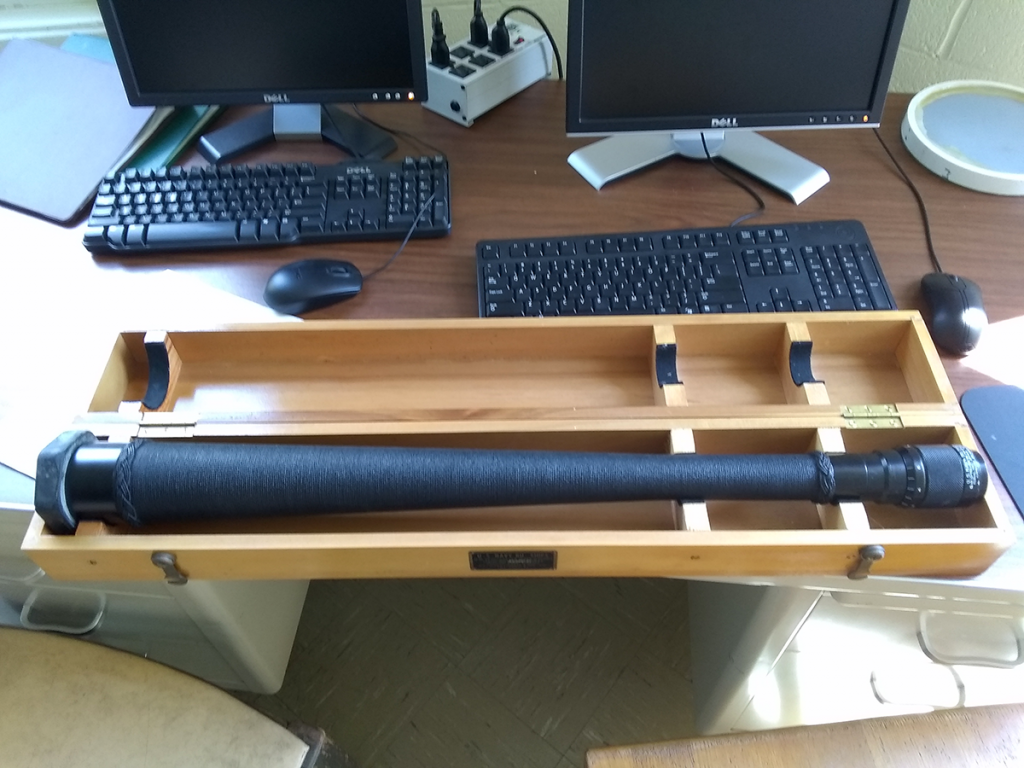
It’s not just telescopes at the Observatory. We also have a spyglass. What’s the difference?
There are a variety of potential optics for a telescope, using reflectors to reflect and focus light, using refractive lenses to bend and focus light, using mirrors to turn a beam around corners, using these in combination. Each has its pros and cons, and careful optical design and precise manufacturing work to gather lots of light, to provide good resolution and magnification, and to correct for optical aberrations.
And in doing all of that, the image reaching your eye or the camera sensor gets flipped upside down. Also in reverse, if you’ve got a mirror in your optical train. When looking at stars and deep sky objects, that’s not a big deal. “Up” is arbitrary in space. For terrestrial viewing, however, up matters. Seeing that incoming pirate ship upside down is disorienting. So a good spyglass keeps up as up.
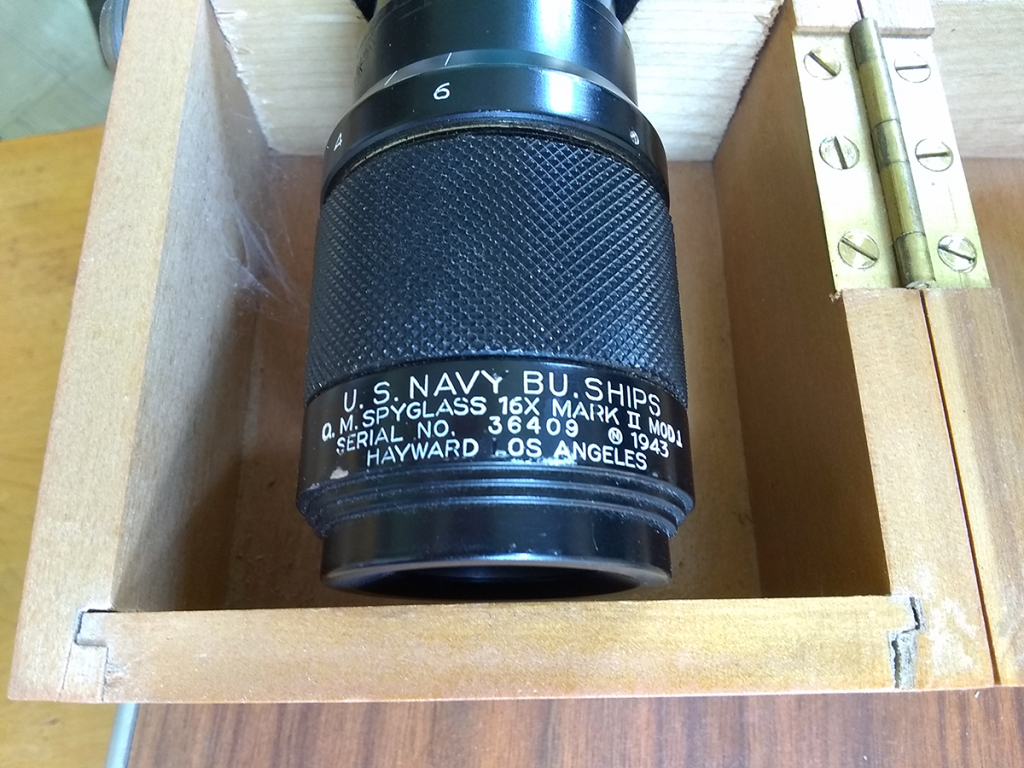
It does so by using a Galilean refractor design, which has a concave lens in the optical assembly to avoid the upside-down flip. The resulting telescope is necessarily longer than a comparable refractor with convex lenses, and thus heavier. That weight tends to limit the possible objective aperture size, and the practical magnification limits are low. Still: very effective for spotting Edward Teach at a distance, or for identifying the four largest moons of Jupiter.
Binoculars, incidentally, manage to keep the world upright thanks to a set of prisms between the objective lenses and the eyepieces. Yet another handy trick in the optical design toolkit.
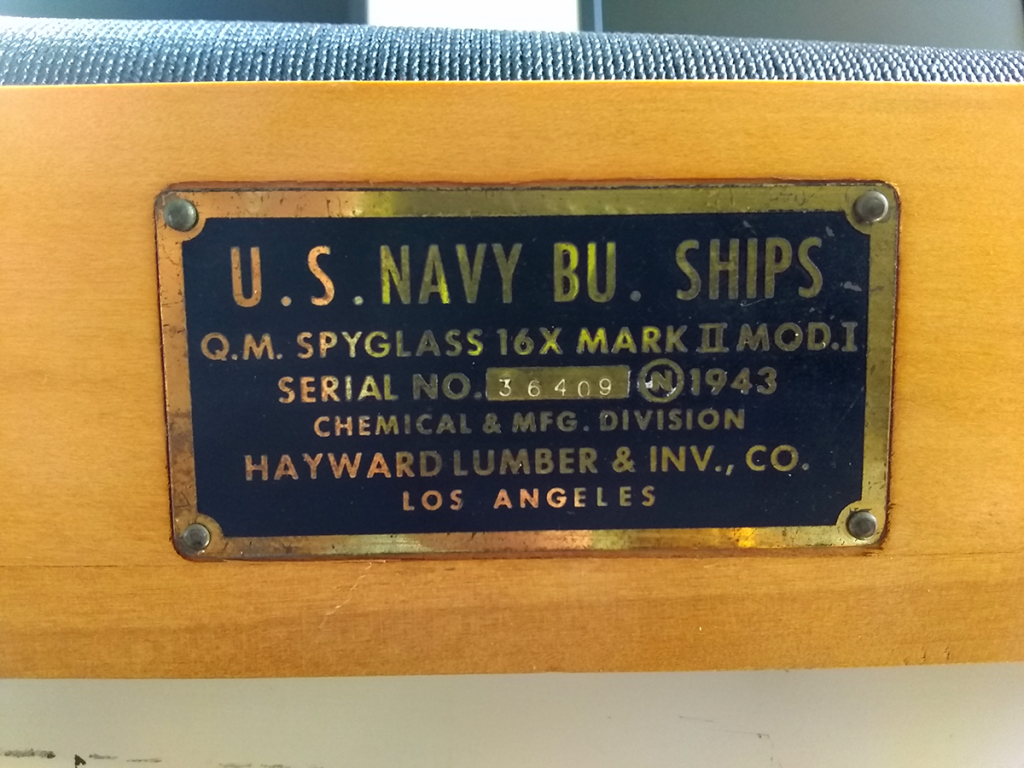
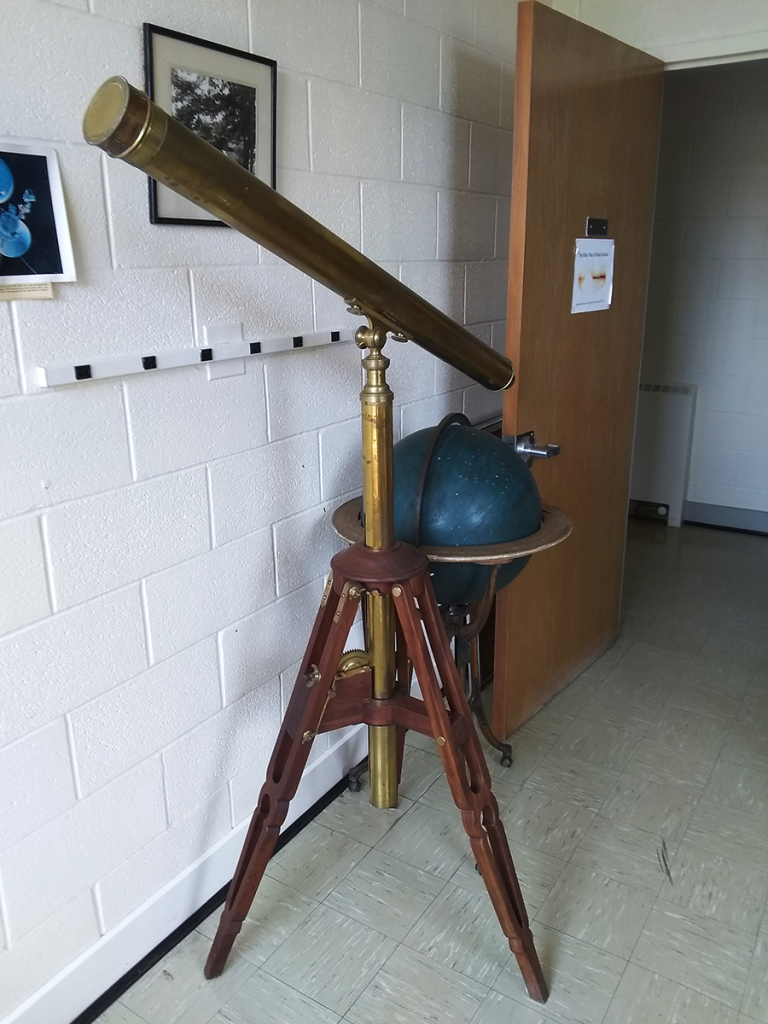
We have a whole range of “old” telescopes at the Observatory which, depending on context, can mean state-of-the-art for the 1990s or the 1890s. This, most likely, is our oldest. It’s a lovely old brass refractor set on a fine wooden tripod, and with a properly-fitted eyepiece might work just fine. Not that we’re setting it outside anytime soon. It’s a showpiece!
How old is it? The acquisition date is currently unknown – probably recorded someplace in all of these stacks of papers – but certainly prior to 1886, because it wasn’t given to Bucknell University, but rather to the Lewisburg University, which is what this school was up until that point. That particular bit of information does confirm that it’s older than our big Clark refractor (1887) and our wee Ertel & Sohn transit telescope (1889).
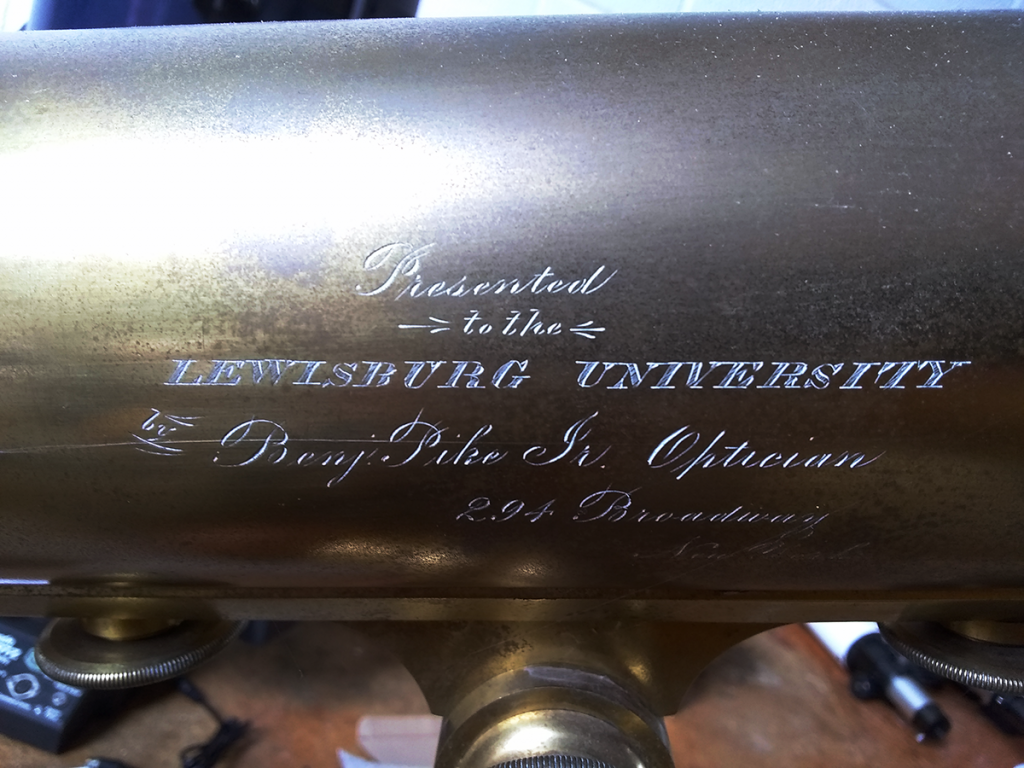
“Presented *to the* LEWISBURG UNIVERSITY by Benj. Pike Jr. Optician 294 Broadway New York”
Second point of interest: Benjamin Pike, Jr. was located at 294 Broadway during 1843-44, as near we can tell. But the University at Lewisburg was founded in 1846. Benjamin Pike, Jr. lived from 1808 to 1864, giving us a reasonable last-possible year. So, um, wave your hands and call it circa [insert whatever]. It’s old, brass, and pretty cool.
It’s unclear who made the telescope, too. Pike (like his papa before him) was an optician by trade, and so would have known his way around lenses. None of the quickly-searchable web sources mentions telescopes, though, so maybe he just knew the right sort of gift for ol’ William Bucknell? It’s entirely possible another department on campus has a set of his award-winning surveyors’ tools. We’ve got theodolites in the closet – as one does – but none quite so vintage.
The-o-do-lite. It’s a word with some chew to it.
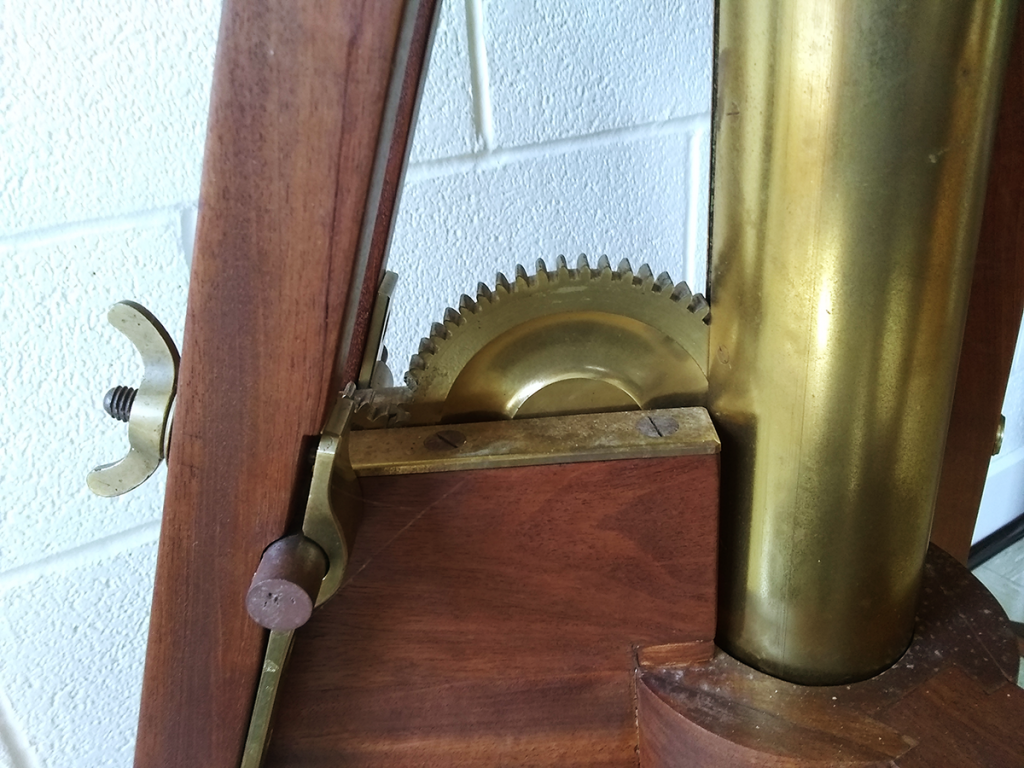
Cool. So very cool.
And not that we’d be willing to part with it, though it’s not like these don’t show up on the market from time to time. It’s a conversation piece!
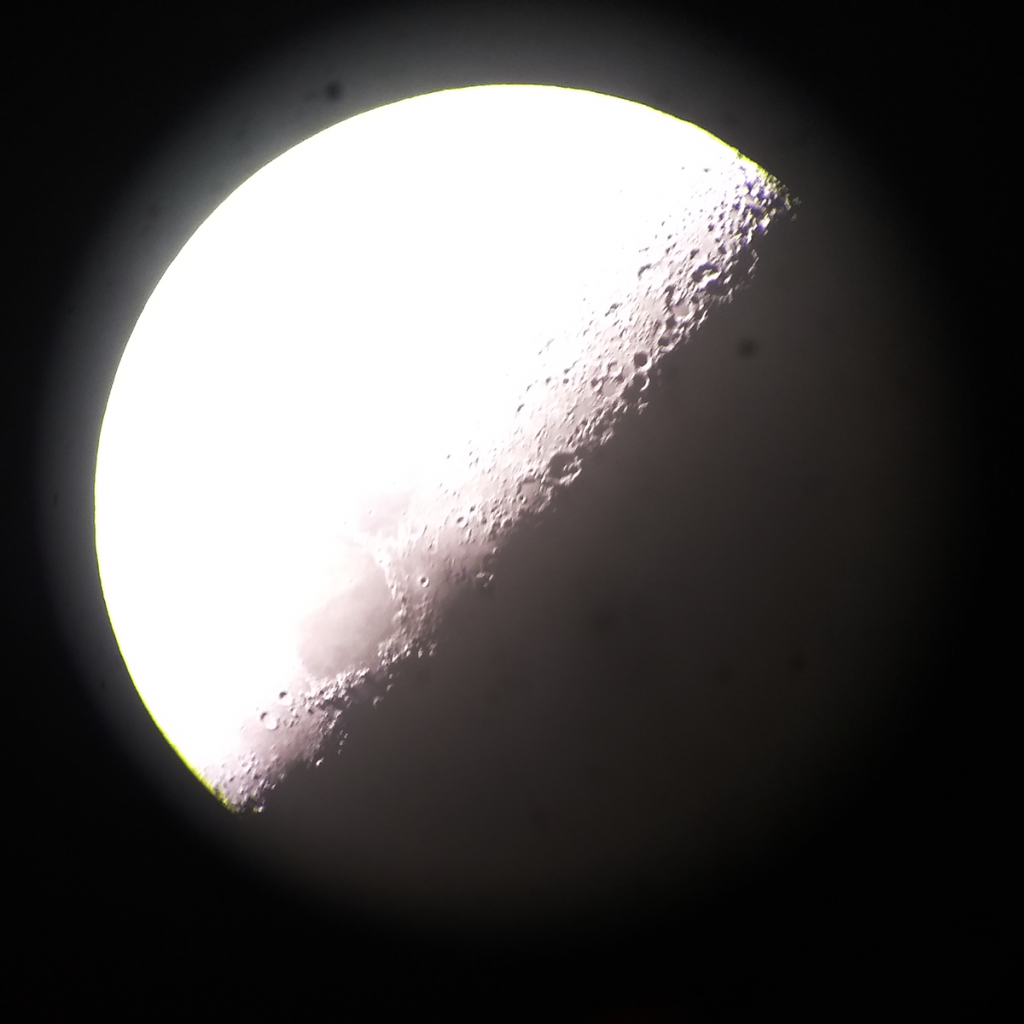
It is possible to snap a photo of the moon through the antique Clark refractor telescope. It’s just not very easy.
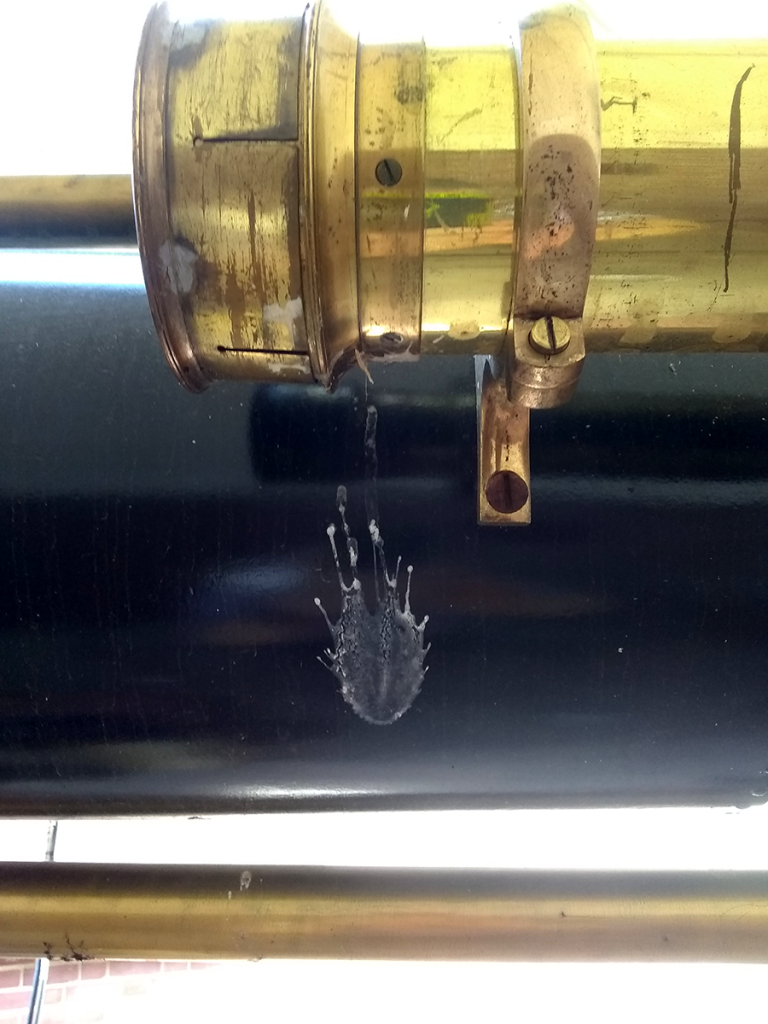
Telescopes don’t work when they’re not at the same temperature as the surrounding air. They don’t work if there is glass between them and the sky. (Okay, they work, just not very well.) So: you use them outside, and any space used to protect them from the elements is best if it’s as much like outside as possible.
Observatory domes, retractable roofs, etc.: all very fancy ways to keep the rain off.
Wildlife has a habit of getting into these spaces, especially the small critters. Spiderwebs are a frequent feature. Birds appreciate the shelter from the elements, and will happily build nests if given sufficient access. It’s amazing what they’ll squeeze through, if for no other reason than to leave a stark white splotch on an all-black telescope. At least it seems that way.
This doesn’t include the exterior-only wildlife population that brightens up the occasional observation session. Nocturnal critters get used to the quiet around daytime spaces, so it’s best to keep alert for opossums and skunks and other adorable visitors when out late at night. That black-and-white blur is probably just a feral cat, but you know what? Best not find out for sure.